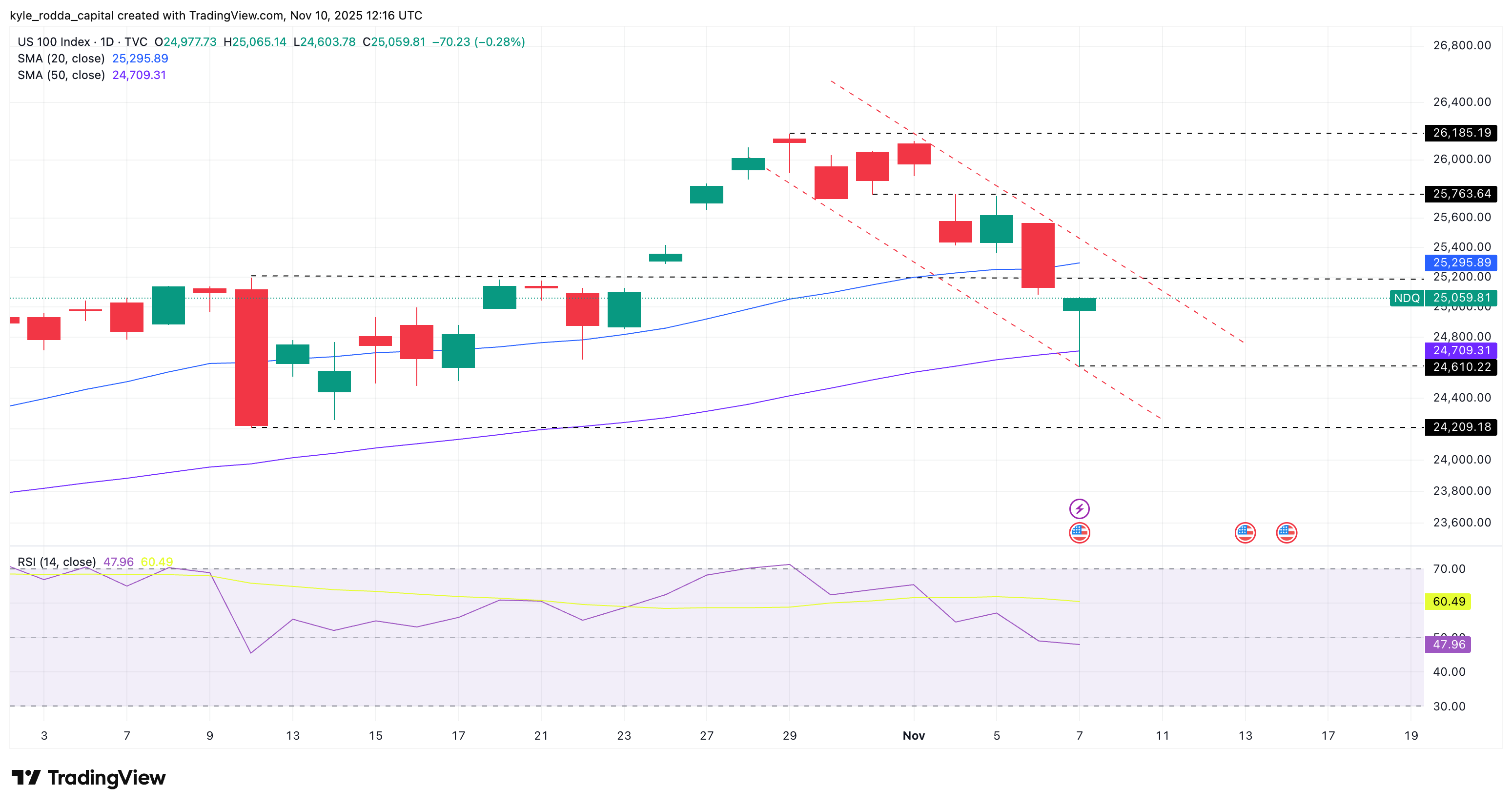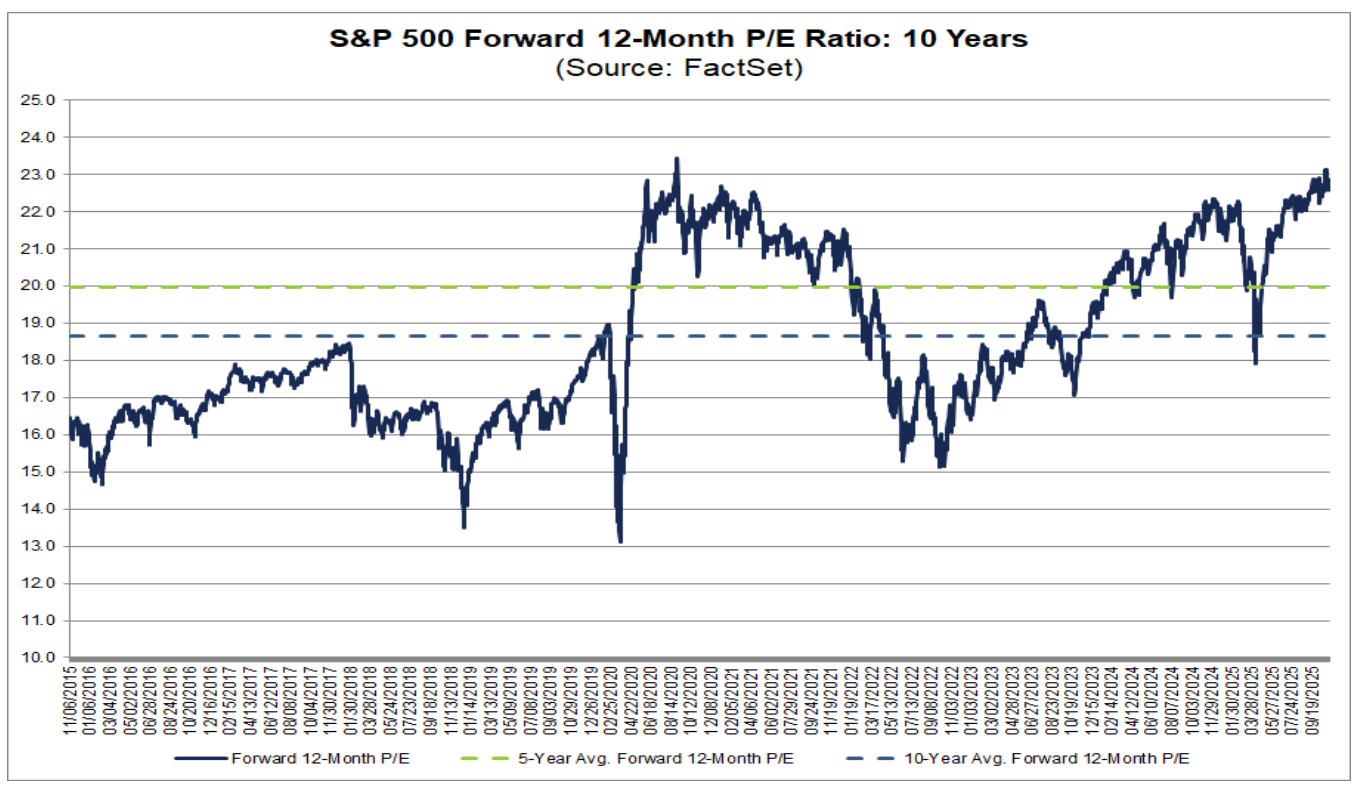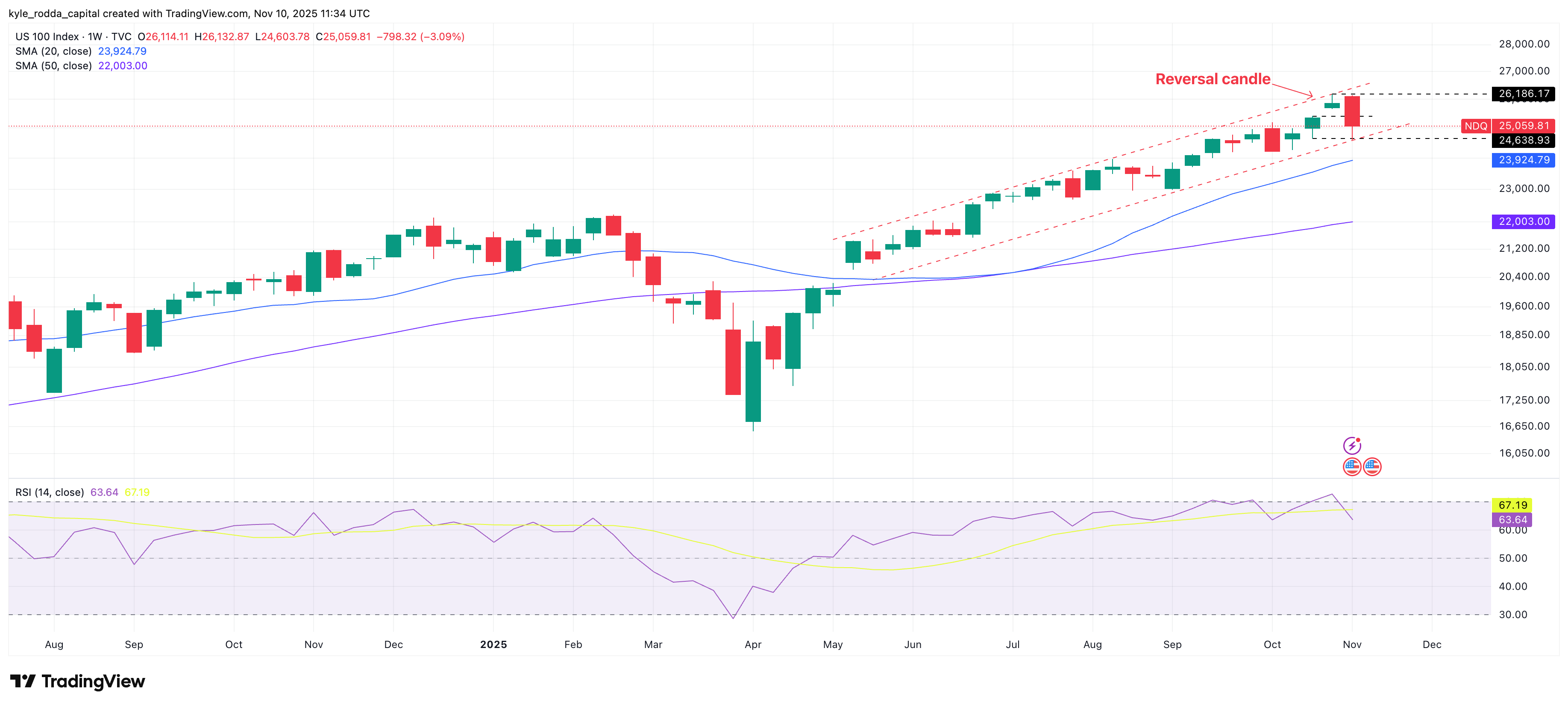A pullback or reversal? The NASDAQ sits at a critical juncture
The NASDAQ's uptrend gets called into question as doubts about US monetary policy and artificial intelligence weighs on sentiment.
After a 3% pullback last week, investors are questioning whether the NASDAQ’s sell-off is a garden variety pullback or a sign of a deeper reversal to come.
Rate uncertainty and AI-ROI sparks sell-off in the NASDAQ
The drop in the NASDAQ boils down, ultimately, to two things: uncertainty about the US interest rate outlook and simmering fears about overinvestment in artificial intelligence at a time of eye-watering equity valuations. As always, Wall Street’s performance this year has been driven by multiple factors. But the surge to record highs recently has been underpinned by the prospect of steep interest rate cuts from the US Federal Reserve going forward and continued strong earnings growth by US tech giants as they monetise AI investments.
The notion of aggressive interest rate cuts, including another move in December, has been challenged by the US Federal Reserve recently. The last Fed decision was characterized as a “hawkish cut”, whereby the Fed lowered interest rates as expected but warned that another cut in December was not a “foregone conclusion”. The reframing by the Fed comes as it looks to shift the narrative around the balance of risks to the US economy and maximise optionality with policy going forward. In essence, while market participants have homed-in on signals of a deteriorating labour market as justification for deep cuts going forward, the Fed is warning that inflation risks should not be ignored. There is sound justification for this stance. Despite cutting interest rates, US inflation remains above target and potentially moving away from it. While some of this is due to expected one off impacts of tariffs as they filter through the economy, some data, like that in recent ISM Services PMI surveys, suggest a more persistent underlying inflation pulse. Given rate cuts, not to mention significant fiscal spending from the Trump administration going forward, could add to price pressures, there is the risk the Fed does not cut as much as previously expected. That’s putting downward pressure on the NASDAQ as asset prices reflect the shift in rates market pricing.

(Source: CME Group)
US earnings growth has been a significant tailwind for the markets recently and corporates are delivering this quarter, too. According to FactSet, as of the 7th of November, earnings growth is tracking at approximately 13% for the third quarter, with 82% of companies beating expectations. However, valuations remain very lofty, with the S&P 500’s 12-month Forward Price-to-Earnings Ratio at levels comparable to the COVID-19 “everything” bubble and the Dot.Com boom. On top of that, analysts are also setting the bar very high for future profits, with double digit growth predicted for calendar year 2026, driven primarily by expectations of a sustained strong performance from the so-called “Magnificent Seven” group of companies. The NASDAQ’s momentum hit speed bumps following a slew of tech earnings a fortnight ago, which despite being objectively strong, failed to exceed lofty expectations. Developments since have raised fears that earnings growth may slow or AI profits will be slower to materialise, and that the huge amounts of physical capital being pumped into the industry may fail to deliver the sort of return on investment baked into asset prices.

(Source: FactSet)
As a result, the pullback in the NASDAQ has had macro and micro elements, the combination of which has pushed the index to confront an important crossroad.
The NASDAQ flashes reversal signal but remains in an uptrend
The drop in the NASDAQ last week would not have been surprising to those who had reviewed the weekly charts before the week commenced. As was the case with the other major US indices, the index had printed a reversal candle, offering a potential – although never guaranteed – omen of the move to come. For the NASDAQ, it was a tentative shooting star set-up combined with a reversal from oversold territory on the RSI that forewarned of the eventual sell-off. Since then, the big drawdown has also added a possible bearish engulfing candle, indicating bears could be dominating the market.

(Source: Trading View)
(Past performance is not a reliable indicator of future results)
Despite the warnings of a potential trend reversal, the NASDAQ remains in its primary uptrend. The market remains defined by a pattern of higher-highs and lower-lows, holding within its trend channel, with the late rally on Wall Street on Friday suggesting some resilience amongst the dip buyers. A short-term counter-trend channel evident when zooming into the daily charts appears as though it’ll break to kick-off the new week, adding to the argument last week’s move was mere pullback. A break below 24,600 would be an indicator of further potential downside, while a break of previous record highs would negate the bearish argument.

(Source: Trading View)
(Past performance is not a reliable indicator of future results)